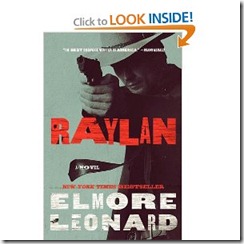Fiction-Zone: Leaps in Fiction Mastery by Diane Holmes, Chief Alchemist of Pitch University
FX Network’s Justified is a modern day Western, inspired by Elmore Leonard’s books and created by Graham Yost. It’s some of the best writing out there, and you can learn a lot by following along.

Today, I’m featuring writer and creator, Graham Yost, director Michael Dinner, and editor Bill Johnson in a video on what it takes to create one simple scene.
Why? Mastery, baby. That’s why.
One thing that’s dang hard to communicate in writing fiction is how to have a “sure hand” in storytelling. Well, here are 10 takeaways from these Big Guns on what it takes to put together a killer scene.
The catch? When you write novels, you have to be the writer, the director, the editor, and all the actors. Just you. So cowboy up.
Justified episode: The Gunfighter (301)
Bad Guy: Fletcher Nix (Desmond Harrington), stone-cold killer for hire (or just because he wants to).
Good Guy: Raylan Givens (Timothy Olyphant), a deputy U. S. Marshall, enforcing justice in his backwoods hometown of Harlan, Kentucky.
Raylan’s Girlfriend: Winona Hawkins (Natalie Zea), the woman he loved, left, and came back to.
Hint: Someone’s gonna die.
Insights
1) Parallel Scenes.
There’s cool power in crafting parallel scenes, where action, dynamics, and story repeats. When it comes to the second time around, the reader/audience shows up knowing (and dreading) what’s going to happen. She has insider information and expectations that make for a juicy payoff.
2) Recognize a good idea, even if it isn’t your own.
3) Orchestrate the action like a dance.
Do it by the marks until it flows, 1, 2, 3. Then let it rip. And remember, every character has his own rhythm.
4) It’s not right until you feel the electricity.
There’s an electricity that happens when things get real and the camera’s roll. Everything else is just practice.
5) What’s he gonna do next?
It all comes down to powerful characters watching each other’s behavior, figuring out what’s gonna happen.
6) People develop a shorthand with each other, complete each other’s sentences.
This is also true of characters. They remember what happened when they met before. They develop a shorthand based on personality and experience.
7) Have a concrete idea, but look for lucky accidents.
You’ve got to be confident enough to throw it all out the window, because you found something even better.
8) Show the wheels turning inside your character’s head.
Make it visual. Turn strategy into action, nuance, and the twitch of a muscle.
9) Look for moments that work beautifully.
That right there. That’s the moment you want.
10) Give context and grounding, like the sound of trucks going by.
The sound of a truck can create the reality where it’s possible, just maybe, for a killer with an ice pick to lose.
Write on.
—
 Diane writes two alternating columns for Freelance-Zone:Fiction-Zone: Leaps in Fiction Mastery and Marketing-Zone:Marketing-Zone: Marketing Yourself and Your Book.
Diane writes two alternating columns for Freelance-Zone:Fiction-Zone: Leaps in Fiction Mastery and Marketing-Zone:Marketing-Zone: Marketing Yourself and Your Book.

I have to say Diane that this is one of the best shows I have ever seen on television. Honest. Great post–it hit home with me!!! 🙂